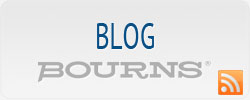Drawing less than half the current of other devices in its class, ADI’s ADA4927 differential amplifier achieves greater than 80 dB SFDR (spurious-free dynamic range) at G=10 (gain=10), more than 6 dB better than competing ADC drivers.
Even at such high gain, the current feedback architecture of the ADA4927 allows it to maintain performance over an input bandwidth range of dc to more than 100 MHz, while the performance of other ADC drivers quickly degrades at frequencies beyond 70 MHz.
The ADA4927 can be used in single-ended-to-differential and differential-to-differential configurations and is optimised for driving today’s high-performance 14- and 16-bit converters, including ADI’s AD9460 and AD9461 two-channel, 16-bit ADCs and AD9246 low-power, 14‑bit ADC. The ADA4927 is especially well suited to wireless communications applications as well as medical equipment and defense electronics that use low IF (intermediate frequency) and baseband signal processing at frequencies up to 100 MHz, and where 14- and 16-bit accuracy is required. The two-channel version, the ADA4927-2, is ideal for driving dual ADCs used in I/Q demodulation schemes and offers low cross-talk of –80 dB at 100 MHz while providing gain and phase matching.
The internal common-mode feedback loop of the ADA4927 allows the user to independently adjust the output common-mode level to match the input common-mode voltage of the ADC, while achieving exceptional output balance and suppression of even-order harmonics.







